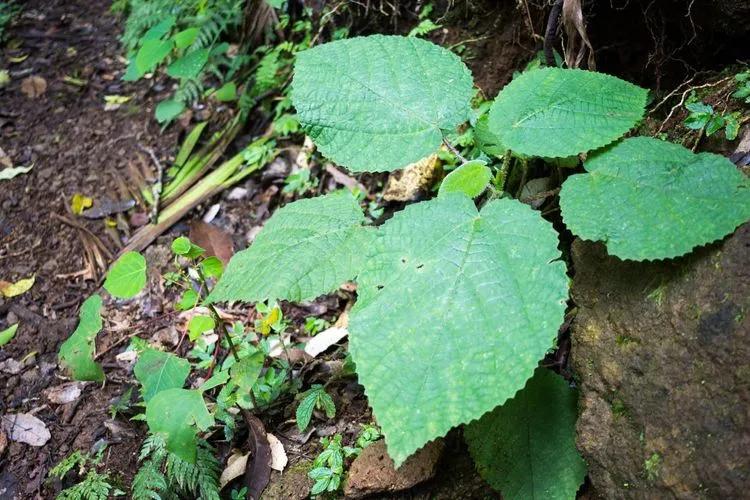It seems that the phrase "plants are not people, they will not hurt you" is no longer relevant. Today we will tell you about a plant that can literally lead a person to suicide! This is Gympie-Gympie — the most painful plant in the world. It comes from Australia (why aren't we surprised that Gympie-Gympie is a neighbor of deadly spiders, snakes, and lizards?).
Historical fact — researchers from Britain once collected samples of this plant to try to create biological weapons. And they failed to repeat this effect. For those who work in Australian forests, Gympie-Gympie remains an occupational hazard.
How it looks like
 Gympie-Gympie or Dendrocnide moroides is quite invisible. Its appearance is no different from thousands of other species. Its leaves are dark green, heart-shaped (ironically). The bush can grow up to three meters wide. However, even a tiny leaf is enough to feel the poison of this plant. The pain from the sting is compared to an acid burn multiplied by the electric shock. But the worst is not even the force of pain, but its duration — a few more years (!) after touching the plant, you will still feel it.
Gympie-Gympie or Dendrocnide moroides is quite invisible. Its appearance is no different from thousands of other species. Its leaves are dark green, heart-shaped (ironically). The bush can grow up to three meters wide. However, even a tiny leaf is enough to feel the poison of this plant. The pain from the sting is compared to an acid burn multiplied by the electric shock. But the worst is not even the force of pain, but its duration — a few more years (!) after touching the plant, you will still feel it.
Where is the poison
The painful toxin is found in tiny hairy filaments. They cover the whole body of the plant — stems, leaves, and fruits. At the tip of the thread is a small bulb containing a neurotoxin that breaks off easily and sticks to the skin. The end of the hair, when touched, breaks and releases the poison. These toxins are incredibly stable and heat-resistant. Even an old museum specimen of a leaf can cause hellish pain. The danger is that if the wind carries this hair and a person inhales it; the poison will affect the mucous membranes.
How does it feel like
 The duration and intensity of pain depend on how large the affected area is. Immediately after touching, you will feel a burning pain that will reach its apogee in just half an hour. In addition, your lymph nodes may swell and pulsate as soon as you touch them. This will take 1 to 4 hours. The plant's hairs will be under the skin for up to six months, and each time you touch it or water, you will feel it very intensely.
The duration and intensity of pain depend on how large the affected area is. Immediately after touching, you will feel a burning pain that will reach its apogee in just half an hour. In addition, your lymph nodes may swell and pulsate as soon as you touch them. This will take 1 to 4 hours. The plant's hairs will be under the skin for up to six months, and each time you touch it or water, you will feel it very intensely.
Animals usually can not withstand the pain of contact with the plant and die. However, there are inhabitants of tropical forests that have developed and become accustomed to this poison. They can even eat this plant.
How to treat the pain
There is no antidote to Dendrocnide moroides! The treatment of the bite combines the removal of burning hairs with a wax strip and the treatment of the affected skin with dilute hydrochloric acid. But how to live with the pain that will stay with a person for so long? It is difficult to imagine that you can live an everyday life when you feel the pain of varying intensity for a year without pauses.
Well, that sounds awful. We hope that soon an antidote will be invented for this poison, and people will be able to protect themselves after the sting.
